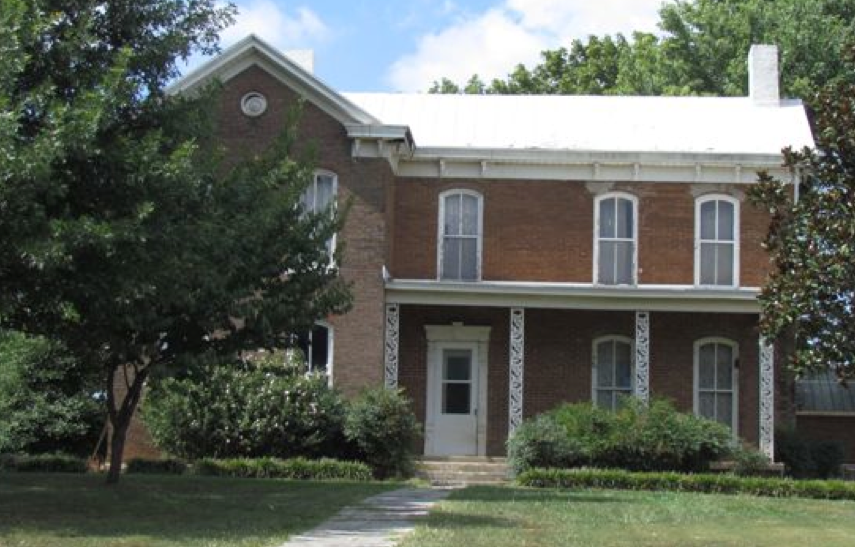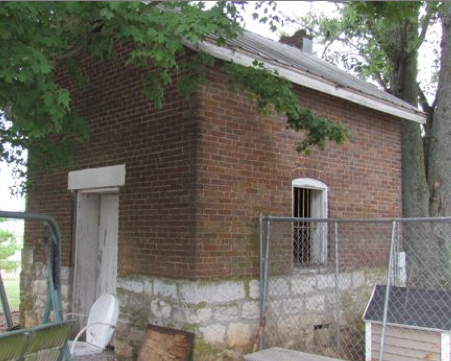 |
| Rose-Daughtry Farmstead – Bowling Green, Ky. Photo: Nat’l Reg. Application (KHC) |
Northeast of Bowling Green on the Louisville Road sits the old community of Bristow. There stands the most recently listed Kentucky property on the National Register of Historic Places. The principal building on the Rose-Daughtry Farmstead, the residence, dates to circa 1880. Six other contributing structures are now included on the Register which exemplify the “overall character … of a prosperous farmstead that had its origins in the late-nineteenth century.”
Judge Rose’s residence, ca. 1880, is T-shaped with both a front and back porch. Though architectural plans were widely available through catalogues of the day, Judge Rose clearly did not adopt this approach as the house is unique and avoids and specific traditional design. “The round-headed windows, brick arches and brackets are typical of Italianate style,” but the “porch roof on the façade … topped by a balustrade … is not style-specific.”
 |
| The ‘jail’ at the Rose-Daughtry Farmstead Photo: Nat’l Reg. Application (KHC) |
One contributing structure is the one-pen ‘jail’ having a high rock-faced stone foundation and brick walls surrounding a dirt floor and front gabled roof. Oral histories suggest that Judge Rose kept prisoners here due to the distance (six miles) from town. It has been suggested that Judge Rose also utilized the prisoners as farmhands.
The property remained in the hands of the Rose family until 1949. Today, the property is located within the Ephram White Park owned by the Warren County Fiscal Court. It was listed on the National Register on March 13, 2013.
The National Register application is available from the Kentucky Heritage Council (the Kentucky state agency charged with recommending sites for inclusion to the Interior Department) shows an interesting history to the Rose-Daughtry application itself. Originally recommended for inclusion in 2008, the application was returned to KHC for additional information. Apparently, the original application had both “technical and substantive” deficiencies. A major part that was lacking was the comparison and contrast between the typical features of regional farming sites and the applicant property. The application contains good insight for those preparing National Register applications.
